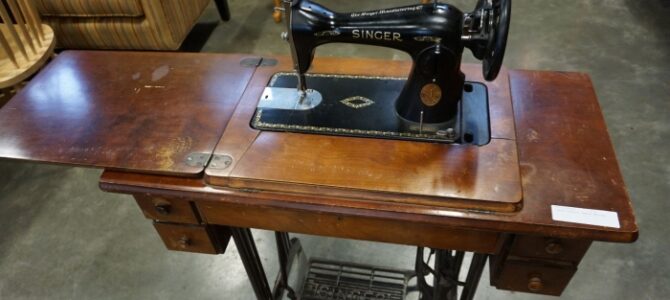Singer, even now, is one of the most popular sewing machines in Lithuania. The company name is synonymous with the device, in the same way Americans refer to photocopies as Xeroxes, and Brits call their vacuum cleaners Hoover. What do those silent Singers in Lithuanian homes really mean?
Singer Sewing Machines became wildly popular in the Russian Empire after a factory was established in Russia in 1905. By 1914 the factory had produced around 600,000 sewing machines sold throughout Europe. It isn’t known how many were sold in Lithuania. The product remained popular in the period between the two world wars. There was a Singer office at the intersection of Adomo Mickevičiaus and Kristijono Donelaičio streets in Kaunas which sold sewing machines throughout Lithuania. Most Lithuanians have probably seen a Singer at their grandmother’s home, either pedal- or hand-powered. It’s difficult to say how a sewing machine came into any household, even though the sewing machines have serial numbers according to which the date of manufacture can be determined. Unfortunately we cannot determine the original owners from these numbers.
Right up till World War II the sewing machine was both a craftsman’s tool and an attribute of the family home of more affluent city-dwellers. In late June 1941, the Holocaust began. Jewish families were robbed and murdered. Hundreds and perhaps thousands of sewing machines taken from Jews were passed from hand to hand. Initially Lithuanians who had close contacts with the Nazis acquired these sewing machines. The sewing machine became the fulfillment of Lithuanian dreams of the life of luxury. Later, in 1944, when the new owners were forced to flee with the Germans or hide, the sewing machines again changed hands.
Full text here.


